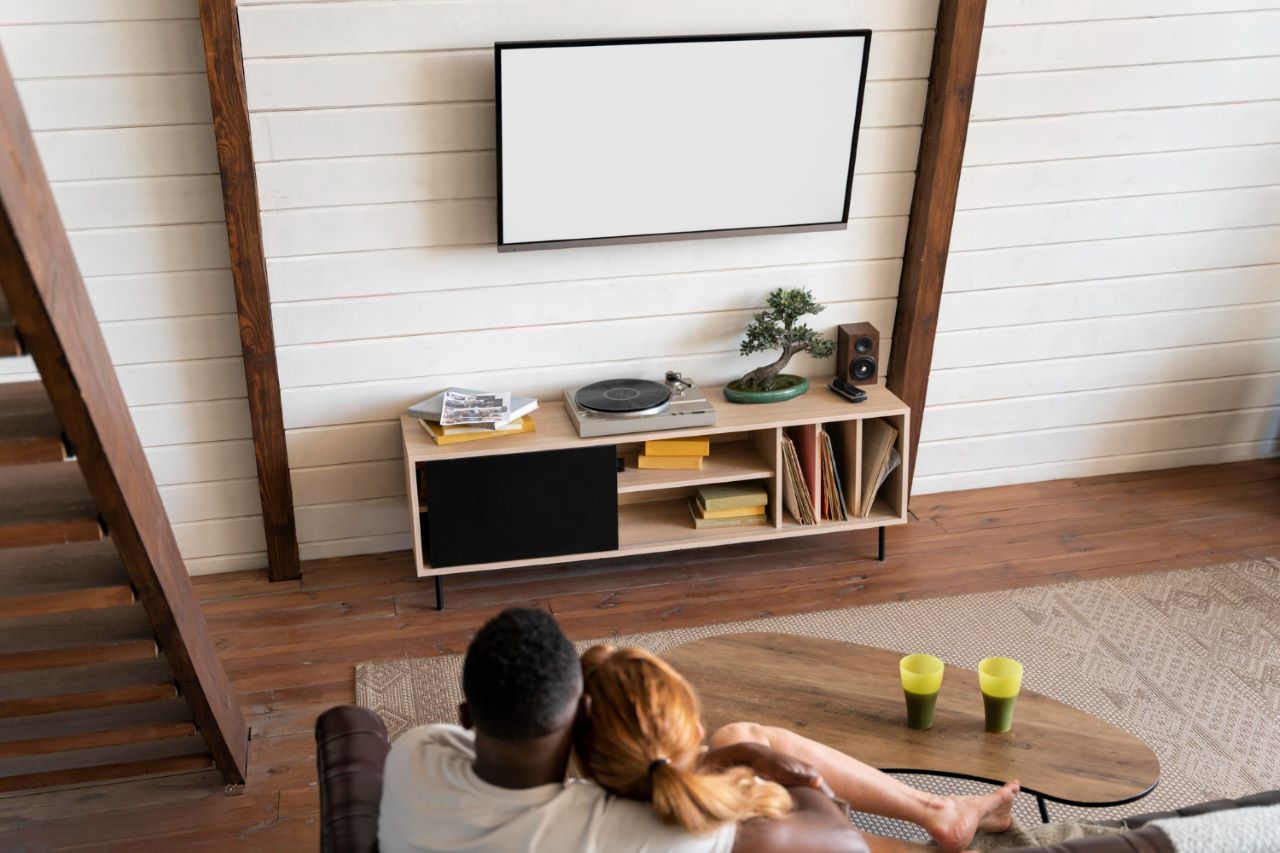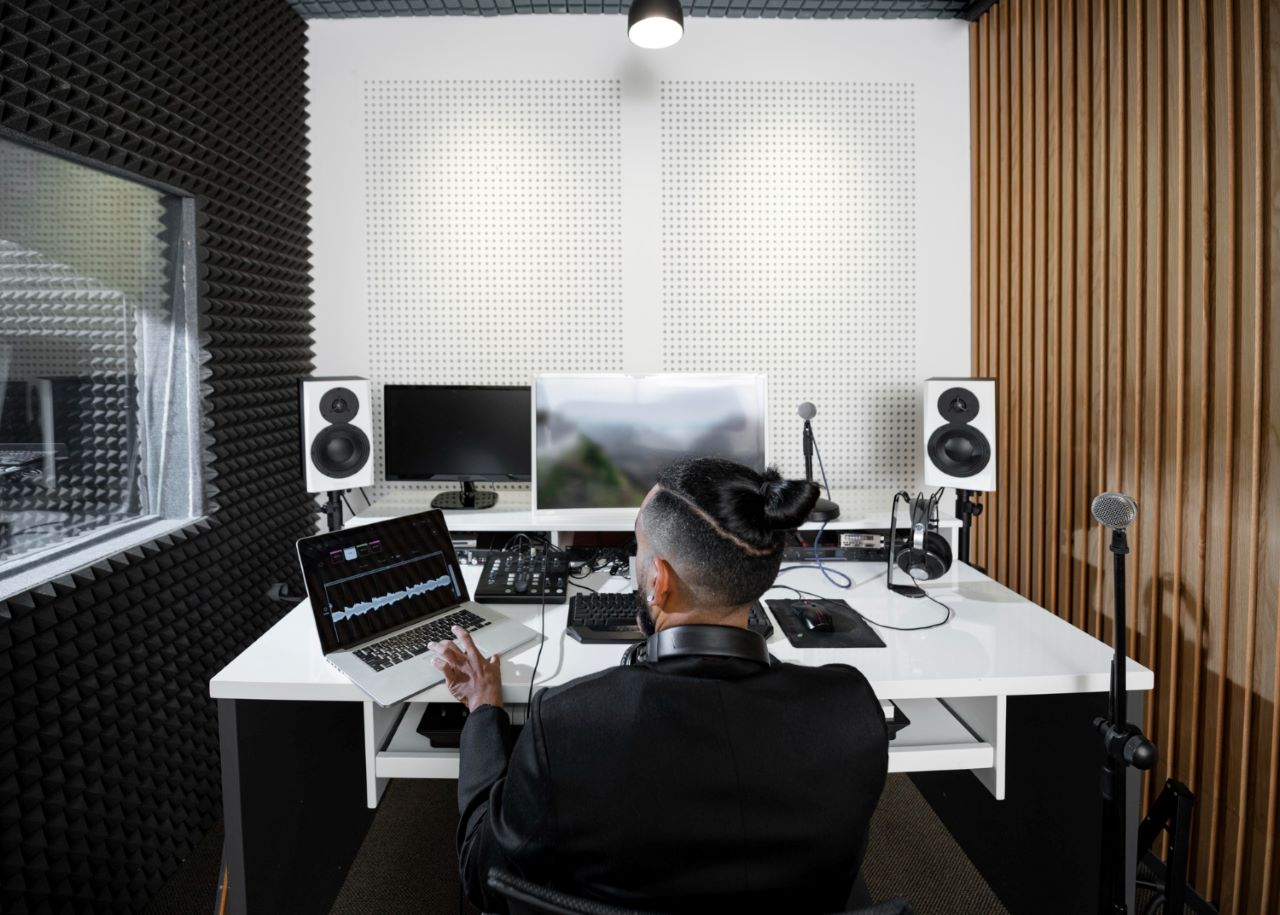When it comes to creating the perfect acoustic environment, whether it’s for a home theater, recording studio for podcast, or just a peaceful living space, the materials you choose to soundproof and treat the space are crucial. Acoustic panels and foam are two of the most popular options available in the market, each with its unique characteristics, advantages, and applications.
In this comprehensive guide, we will delve deep into the world of acoustic treatment, comparing acoustic panels vs foam to help you make an informed decision tailored to your specific needs. We will explore the various types, materials, and installation methods of both options, as well as weigh their pros and cons, providing you with practical insights and real-life applications.
So, whether you are a sound engineer, a homeowner looking to enhance your living space, or just someone curious about acoustic treatment, this article is crafted to guide you through the maze of choices and find the harmony in acoustics that you seek.
Contents
Acoustic Panels
Acoustic panels play a pivotal role in enhancing the sound quality of a space by absorbing excess sound waves, reducing echo, and minimizing noise. They are widely used in various settings, including recording studios, home theaters, offices, and more, to create an acoustically balanced environment.
These panels are not just functional; they also add an aesthetic element to the space, available in a variety of designs, colors, and materials.
Types Of Acoustic Panels

Image by Freepik
When it comes to acoustic panels, there are several types to choose from, each serving different acoustic needs and preferences.
- Fabric-Wrapped Panels: Fabric-wrapped panels are popular for their versatility and aesthetic appeal. They consist of sound-absorbing core material, such as fiberglass or mineral wool, wrapped in a layer of fabric. These panels are customizable and available in various sizes, colors, and designs, making them a favorite for interior designers and architects.
- Perforated Acoustic Panels: Perforated acoustic panels are known for their unique design, featuring a series of holes or slots that allow sound waves to pass through and be absorbed by the underlying material. These panels are often made of wood or MDF, providing not just sound absorption but also an interesting visual element to the space.
- Wood Acoustic Panels: Wood acoustic panels offer a blend of aesthetic appeal and acoustic performance. They are made from solid wood or veneer and can be designed with various patterns and finishes. While they are more expensive than other types, their natural look and feel add warmth and elegance to any space.
Materials Used In Acoustic Panels
The effectiveness of an acoustic panel largely depends on the materials used in its construction.
- Fiberglass: Fiberglass is a common material used in acoustic panels due to its excellent sound absorption properties. It is lightweight, durable, and can be easily covered with fabric for a finished look.
- Mineral Wool: Mineral wool is another popular choice for acoustic panels. It is made from molten rock or slag, spun into a fibrous material that is effective at absorbing sound waves. It is also fire-resistant, adding an extra layer of safety to your space.
- Wood: Wood is used not just for the frame of acoustic panels but also as a core material in some types. It provides a natural and warm aesthetic, though it is generally not as effective at sound absorption as fiberglass or mineral wool.
Installation Of Acoustic Panels
Proper installation is key to maximizing the effectiveness of acoustic panels.
- Wall Mounting: Wall mounting is the most common installation method for acoustic panels. It involves attaching the panels directly to the wall using adhesives, mounting clips, or other hardware.
- Ceiling Mounting: Ceiling mounting is another option, especially useful in spaces with limited wall space. Panels can be hung from the ceiling or attached directly, helping to absorb sound that travels upwards.
- Freestanding Panels: For those looking for a flexible and temporary solution, freestanding panels are an excellent choice. They can be moved around as needed and are ideal for rented spaces where permanent installation is not an option.
Pros And Cons Of Acoustic Panels

Photo by Adolfo Félix on Unsplash
Understanding the advantages and disadvantages of acoustic panels is crucial in making an informed decision.
Advantages
- Effective Sound Absorption: Acoustic panels are highly effective at absorbing sound, reducing echo, and creating a clearer acoustic environment.
- Aesthetic Appeal: With a variety of designs and materials available, acoustic panels can enhance the visual appeal of a space.
- Customizable: Many types of acoustic panels are customizable, allowing for a tailored acoustic solution.
Disadvantages
- Cost: Acoustic panels can be more expensive than other soundproofing options.
- Space Consumption: Panels require wall or ceiling space, which might not be ideal for smaller rooms.
- Installation: Some types of panels may require professional installation.
Acoustic Foam
Acoustic foam is a lightweight, versatile material designed to enhance the sound quality in a space by absorbing sound waves and reducing echo. It is commonly used in recording studios, home theaters, and various other settings where sound quality is paramount. Acoustic foam is known for its ease of installation and affordability, making it a popular choice for both professionals and DIY enthusiasts.
Types Of Acoustic Foam
There are several types of acoustic foam available, each designed to target specific sound frequencies and applications.
- Pyramid Foam: Pyramid foam features a distinctive pyramid-shaped pattern that increases the surface area for sound absorption. It is particularly effective at absorbing high-frequency sound waves and is often used in recording studios to prevent sound reflection.
- Wedge Foam: Wedge foam is another popular choice, characterized by its wedge-shaped pattern. It provides excellent sound absorption across a wide range of frequencies and is versatile enough to be used in various settings.
- Eggcrate Foam: Eggcrate foam has a convoluted pattern similar to an egg carton, which helps to trap sound waves and reduce echo. It is a cost-effective option for sound absorption, though it may not be as aesthetically pleasing as other types.
Materials Used In Acoustic Foam

Image by Freepik
The material composition of acoustic foam plays a crucial role in its sound absorption capabilities.
- Open-Cell Polyurethane Foam: Open-cell polyurethane foam is the most common material used for acoustic foam. It has a cellular structure that allows sound waves to enter and be absorbed, reducing echo and reverberation.
- Melamine Foam: Melamine foam is a lightweight, open-cell foam known for its fire-resistant properties and excellent sound absorption capabilities. It is more expensive than polyurethane foam but offers additional safety benefits.
Installation Of Acoustic Foam
Installing acoustic foam is a straightforward process, and there are several methods available to suit different needs.
- Adhesive Mounting: Adhesive mounting is the most common installation method for acoustic foam. It involves applying adhesive to the back of the foam panels and attaching them directly to the wall or ceiling.
- Temporary Mounting: For those who require a temporary or non-permanent solution, temporary mounting options such as double-sided tape or Velcro strips can be used to attach the foam panels.
Pros And Cons Of Acoustic Foam
Understanding the advantages and disadvantages of acoustic foam is essential for making an informed decision.
Advantages
- Affordability: Acoustic foam is generally more affordable than acoustic panels, making it a cost-effective solution for sound absorption.
- Ease of Installation: Acoustic foam is lightweight and easy to install, making it a popular choice for DIY projects.
- Versatility: Acoustic foam is available in a variety of types and sizes, making it suitable for a wide range of applications.
Disadvantages
- Limited Low-Frequency Absorption: Acoustic foam is less effective at absorbing low-frequency sound waves compared to acoustic panels.
- Aesthetic Limitations: While there are various patterns available, acoustic foam may not offer the same level of aesthetic appeal as acoustic panels.
- Durability: Acoustic foam may degrade over time, especially if exposed to sunlight or other environmental factors.
Acoustic Panels vs Foam
When it comes to choosing between acoustic panels and foam for sound treatment, it’s crucial to weigh the differences in their effectiveness, aesthetics, durability, and cost. Both have their unique advantages and drawbacks and understanding these can help you make an informed decision tailored to your specific needs.
Effectiveness In Sound Absorption

Image by Freepik
Acoustic panels are generally more effective in absorbing a broader range of sound frequencies, including lower frequencies that acoustic foam may struggle with. The denser materials used in acoustic panels, such as fiberglass or mineral wool, contribute to their superior sound absorption capabilities.
On the other hand, acoustic foam is more effective for higher-frequency sounds and is often used to prevent sound reflections and flutter echoes in a space.
Aesthetic Considerations
Acoustic panels offer a wider variety of aesthetic options, with customizable fabrics, designs, and sizes available to match the interior design of your space. They can add a touch of elegance and sophistication, enhancing the overall look of the room.
Acoustic foam, while available in different patterns and colors, may not provide the same level of aesthetic appeal and is often considered more utilitarian in appearance.
Durability And Longevity
Acoustic panels are typically more durable and have a longer lifespan than acoustic foam. The materials used in acoustic panels are more robust, and the construction is designed to withstand the test of time. Acoustic foam, while lightweight and easy to install, may degrade over time, especially if exposed to sunlight or other environmental factors, requiring replacement sooner.
Cost Comparison
In terms of cost, acoustic foam is generally more affordable than acoustic panels. This makes it a popular choice for those on a tight budget or for DIY sound treatment projects. However, it’s important to consider the long-term investment, as the durability and effectiveness of acoustic panels may provide better value over time despite the higher upfront cost.
What Are The Similarities?
Despite their differences, acoustic panels and foam share some common ground in their purpose and functionality.
- Sound Absorption: Both are designed to absorb sound waves, reduce echo, and improve the acoustic quality of a space.
- Versatility: They can be used in a variety of settings, including recording studios, home theaters, offices, and more.
- Ease of Installation: While the specific installation methods may differ, both acoustic panels and foam can be installed relatively easily, with plenty of resources available for guidance.
By understanding both the differences and similarities between acoustic panels and soundproof foam, you can make a more informed decision on which sound treatment option is best to reduce high frequency sounds, ensuring a harmonious and acoustically balanced space.
Conclusion
Choosing between acoustic panels and foam for sound treatment is a decision that hinges on various factors, including sound absorption effectiveness, aesthetic preferences, durability, and budget. Acoustic panels, with their broad frequency absorption range and customizable aesthetic options, offer a premium solution for those seeking both functionality and style.
Acoustic foam, on the other hand, provides a cost-effective and easy-to-install option, particularly effective for higher-frequency sound absorption. By carefully considering the specific needs of your space and weighing the pros and cons of each option, you can achieve an acoustically balanced environment that enhances both the better sound quality and aesthetic appeal of your space.
Remember, the key to optimal acoustic treatment lies in understanding your space, your needs, and the unique characteristics of each sound treatment option.